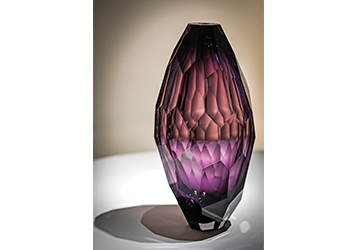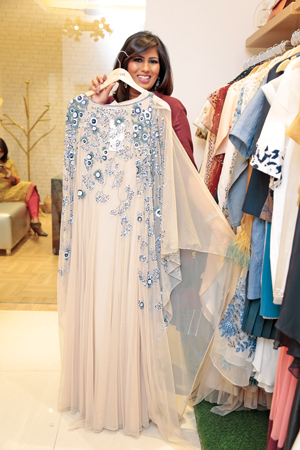
For the Sake of Art
The showcasing of art in all its diverse forms comes easily to the Kolkata-based Emami Group, which has long harboured a mission of supporting artists and artisans and contributing to the well-being of the world of art. The same was evident at the grand launch of its Kolkata Centre for Creativity (KCC) in November 2018. Located off Eastern Metropolitan Bypass in Kolkata, this interactive and multi-disciplinary art centre is completely dedicated to art, artists and art lovers.
The main gallery at KCC is Emami Art that is spread across 10,000 square feet. Emami Group Director Richa Agarwal, who is also the executive director of KCC and the CEO of Emami Art, says, “We are proud to formally open Emami Art at the Kolkata Centre for Creativity. It is a dream project built with love and passion, and we hope that it will become a creative destination for everyone— artists, designers, craftsmen, collectors, teachers, critics, curators, students and the general public.”
The centre has been designed by architect Pinakin Patel, who is also the creative director of KCC. Patel, who has designed spaces like the Museum Art Gallery in Mumbai and the Karl Khandalavala Gallery at the Chhatrapati Shivaji Maharaj Vastu Sangrahalaya (formerly Prince of Wales Museum), has put together KCC in a way that it accommodates every facility required to promote and practise interactive art. “We hope that the creative community moves inward from its safe stay on the peripheries of life to the very core of life… that instead of merely adding surplus products on Earth, it rallies forth to save Planet Earth.”
Championing art
KCC occupies an area spanning 70,000 square feet. On the ground floor is Emami Art that will regularly conduct curated exhibitions, featuring the works of both established and upcoming artists. The vision, Agarwal informs, is to ensure that while the popular contribute to the academic, the academic in turn, uplift the popular. The first floor has an exhibition space that is dedicated to art, craft, antiquity and design by different artists and artisans. It continues on to the second floor, which has an area dedicated to Indian handicrafts. The first and second floors are connected via an amphitheatre featuring wooden steps and pillars that has been designed for baithaks and cultural events.
The second floor has the Imagination Area, where renowned author and mythologist Devdutt Pattanaik will be introducing works by Amruta Patil, a graphic novelist and painter. Along with the Imagination Area, on the same floor is Restaurant Grace and a gift shop that offers specially designed and curated merchandise. The third floor has the Conservation Studio. The fourth floor houses professional audio and video facilities for launches, talks and events, in addition to the Dance Studio, together with a mirrored space for rehearsals. The fifth floor has two libraries, one displaying books and the other displaying specimens of innovative materials that can inspire visiting artists and designers with new ideas. Additionally, it has the Art Studio and Maker Section that encourage users to develop skills and prototype their ideas on digital and 3D printers and laser cutters.
The opening show
Installed at the entrance to KCC was ‘Disobedience’, a ‘living’ sculpture by Greek designer and engineer Nassia Inglessis—a 17-metre-long kinetic tunnel made from steel spring and recycled plastic. As a visitor steps onto the narrow gangway inside and walks through it, the structure moves and inflates, changing shape as he or she reaches the end. Inglessis, who has previously showcased this installation at the London Design Biennale 2018, says that by interacting with it, a visitor will have transgressed a boundary, transitioning from an ‘obedient spectator’ to a ‘disobedient actor’.
The inauguration of Emami Art was marked by ‘School’, Eastern India’s first-ever solo exhibition of the late Dashrath Patel, which was curated by Pinakin Patel, a friend of the celebrated Indian modernist. Known as India’s ‘Renaissance Man’, Dashrath Patel was the first Director of Design & Education at the National Institute of Design, Ahmedabad. He was awarded the Padma Shri in 1981, followed by the Padma Bhushan, posthumously in 2011 (he passed away in 2010).
Showcasing Dashrath Patel’s line drawings, ceramics and collages from 1930s -2000, the retrospective exhibition charted his artistic journey across mediums and types. Also on display was his photographic work, which has rarely been seen at galleries. Richa Agarwal concludes, “As one of the finest galleries for contemporary art, Emami Art will hold four exhibitions in a year, and we could not think of the works of a better artist to showcase at the inaugural exhibition other than the late Dashrath Patel, an artist who, like the Centre, explored a range of disciplines and found the common creative thread between all the work he produced.










